Introduction

Hard boiled eggs are a great source of protein and are a popular food item worldwide. However, sometimes the yolk of a hard boiled egg can turn grey, which may cause concern among some people. In this article, we will discuss the causes of a grey yolk in a hard boiled egg, how to prevent it, and the benefits of eating hard boiled eggs.
Causes of a Grey Yolk

There are several reasons why the yolk of a hard boiled egg may turn grey. One of the most common reasons is overcooking. When an egg is boiled for too long, the iron in the yolk reacts with the sulfur in the white, which can cause the yolk to turn grey. Another reason for a grey yolk is if the egg is not fresh. As an egg ages, the yolk can become less vibrant and turn grey in color.
Prevention
There are several ways to prevent a grey yolk in a hard boiled egg. Firstly, it is important to not overcook the eggs. To avoid overcooking, it is recommended to cook the eggs for no longer than 12 minutes. Secondly, it is important to use fresh eggs when boiling them. Fresh eggs have a lower pH level, which can help prevent the yolk from turning grey. Lastly, it is recommended to cool the eggs quickly after boiling them. This can be done by running cold water over the eggs or placing them in an ice bath.
Benefits of Eating Hard Boiled Eggs
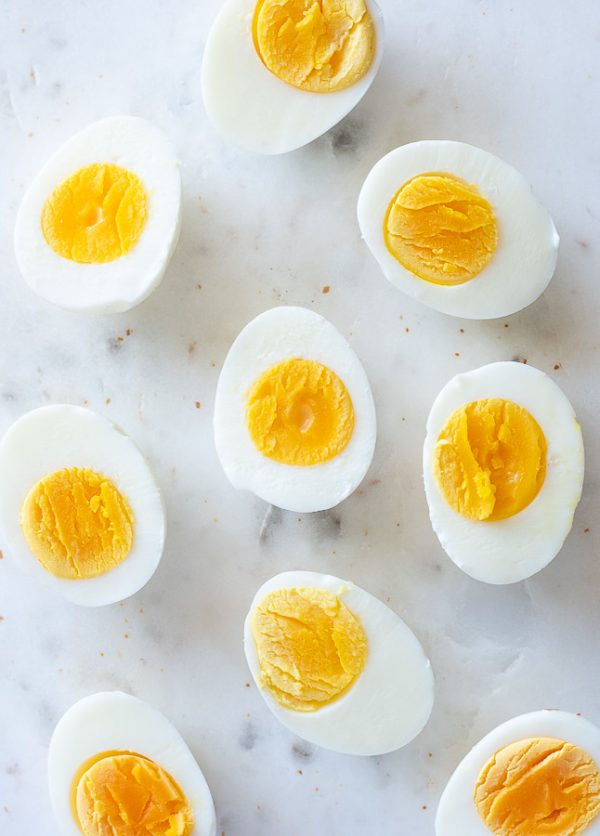
Despite the possibility of a grey yolk, hard boiled eggs are a nutritious food item and have many health benefits. They are an excellent source of protein, which can help with muscle growth and repair. They also contain essential vitamins and minerals, such as vitamin D and calcium, which are important for bone health. Additionally, hard boiled eggs are a great snack option as they are low in calories and can help with weight loss.
Conclusion
In conclusion, a grey yolk in a hard boiled egg can be caused by overcooking or using eggs that are not fresh. To prevent a grey yolk, it is important to not overcook the eggs, use fresh eggs, and cool them quickly after boiling. Despite the possibility of a grey yolk, hard boiled eggs are a nutritious food item and have many health benefits. They are an excellent source of protein and contain essential vitamins and minerals. So, go ahead and enjoy your hard boiled eggs without worrying about a grey yolk!
Related video of Hard Boiled Egg Grey Yolk: Causes, Prevention, and Benefits

Introduction
Happy Birthday to You, also known as the "Happy Birthday Song," is one of the most recognized and frequently sung songs in the world. However, did you know that the song was once under a copyright that restricted its use and performance?
In this article, we will discuss the history of the Happy Birthday Song patent, how it was acquired, and how it eventually became public domain.
The History of the Happy Birthday Song
The Happy Birthday Song was written in 1893 by Mildred Hill and her sister, Patty. Originally titled "Good Morning to All," the song was intended to be sung in kindergarten classrooms as a greeting song.
Over time, the song became popular for birthdays and was sung with the now-famous "Happy Birthday to You" lyrics.
The Acquisition of the Happy Birthday Song Patent

In 1935, the Happy Birthday Song was copyrighted by the Clayton F. Summy Company. The company acquired the rights from Jessica Hill, Mildred and Patty's sister, who had inherited the rights from her sisters.
The copyright granted exclusive rights to the song's melody and lyrics, allowing the Summy Company to collect royalties from anyone who performed or reproduced the song.
The Controversy Surrounding the Happy Birthday Song Patent
The Happy Birthday Song patent was the subject of controversy for decades. Many people believed that the song should be in the public domain since it was a popular and widely recognized song.
Others argued that the song's copyright was valid, and anyone who used the song without permission was infringing on the Summy Company's rights.
The Lawsuits

Over the years, the Happy Birthday Song patent was the subject of several lawsuits. In 2013, a documentary filmmaker named Jennifer Nelson filed a lawsuit against Warner/Chappell Music, the company that had acquired the rights to the song from the Summy Company.
Nelson argued that the Happy Birthday Song was in the public domain and that Warner/Chappell Music had no right to collect royalties from anyone who used the song.
The Settlement

In 2015, a federal judge ruled that the Happy Birthday Song was in the public domain and that Warner/Chappell Music had no right to collect royalties from anyone who used the song.
The ruling was a victory for Nelson and anyone who wished to use the Happy Birthday Song without fear of legal repercussions. The song was finally free for everyone to use and enjoy.
Conclusion
The Happy Birthday Song patent was a controversial issue for many years. However, with the 2015 ruling that the song was in the public domain, the song is now free for everyone to use and enjoy without fear of legal repercussions.
Happy Birthday to You, indeed!
Related video of Happy Birthday Song Patent

Introduction
Have you ever experienced your hands falling asleep frequently? It is a common problem that many people face. While it may seem harmless, it can be a sign of an underlying health condition. In this article, we will discuss the causes, symptoms, and treatment options for hands falling asleep all the time.Causes of Hands Falling Asleep
There are various reasons why you may experience hands falling asleep frequently. One of the most common causes is the compression of nerves. When nerves are compressed, it can lead to decreased blood flow and oxygen to the affected area, causing a tingling sensation. Other causes include:- Carpal Tunnel Syndrome- Peripheral Neuropathy- Raynaud's Disease- Diabetes- Vitamin Deficiency- Hypothyroidism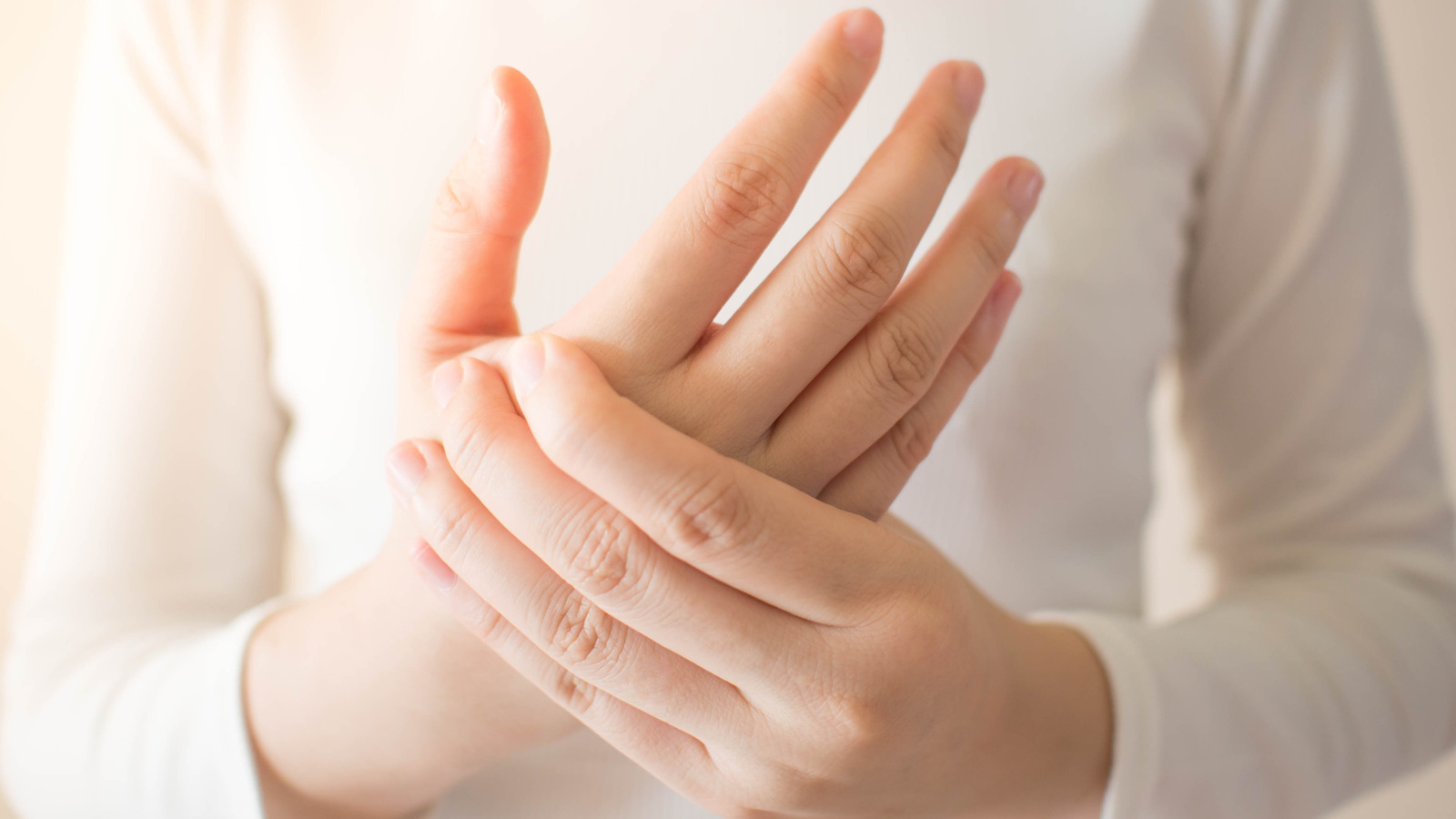
Symptoms of Hands Falling Asleep
The symptoms of hands falling asleep are usually temporary and can be relieved by changing your position or shaking your hands. However, if the problem persists, it can lead to other symptoms such as:- Numbness- Tingling- Weakness- Pain- Difficulty in moving the affected areaTreatment Options for Hands Falling Asleep
The treatment options for hands falling asleep depend on the underlying cause. For example, if the cause is carpal tunnel syndrome, surgery may be required to release the pressure on the nerves. Other treatment options include:- Medications to control pain and inflammation- Physical therapy to improve strength and flexibility- Lifestyle changes such as exercise and diet modification- Vitamin supplements to address deficiencies
Prevention of Hands Falling Asleep
Preventing hands from falling asleep is possible by taking some simple steps. These include:- Avoiding repetitive hand movements- Taking breaks during activities that involve prolonged use of hands- Maintaining good posture- Doing exercises to improve flexibility and strength- Keeping hands warm in cold weatherConclusion
In conclusion, hands falling asleep all the time can be a sign of an underlying health condition. It is important to identify the cause and seek appropriate treatment. Preventing the problem is also possible by taking simple steps. If you experience persistent symptoms, it is advisable to consult a healthcare professional.Related video of Hands Fall Asleep All The Time

Introduction
Have you ever seen someone putting their hand inside their jacket while walking or standing? This gesture is quite common and has been used in various movies and TV shows. People often wonder what this gesture means and why some people do it. In this article, we will discuss the hand inside jacket meaning and its origins.
History of the Gesture
The hand inside jacket gesture is also known as the 'Napoleon pose' named after the French emperor, Napoleon Bonaparte. It is believed that Napoleon used this gesture to show his power and dominance. He would put his hand inside his coat to keep it warm, as jackets at that time did not have pockets. This gesture became associated with Napoleon and his power, and people started to imitate it.
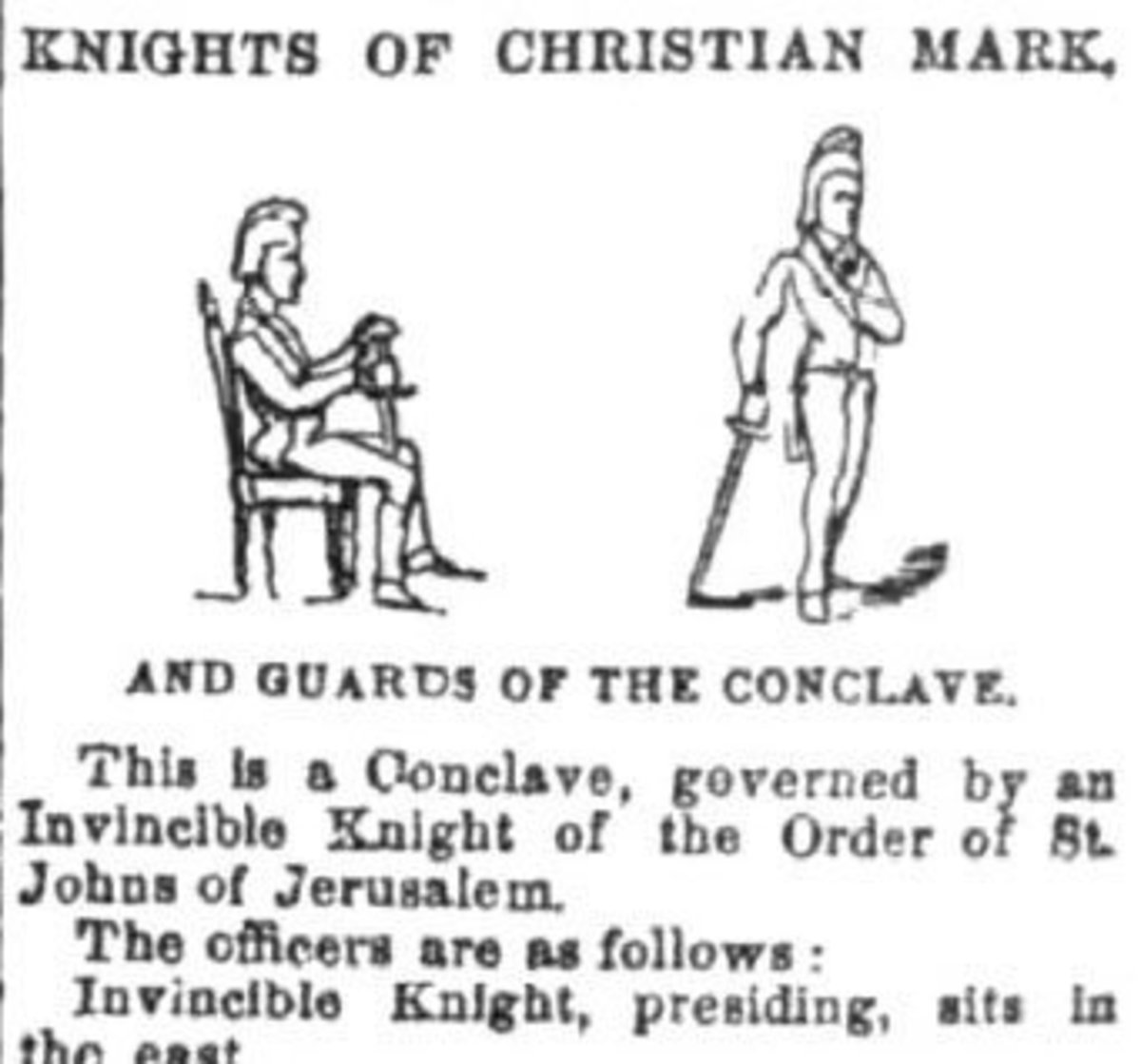
Meaning of the Gesture
Nowadays, the hand inside jacket gesture is commonly used in movies and TV shows to depict power, intelligence, and confidence. It is often used by fictional characters who are in a position of authority or who want to show their dominance. In real life, this gesture can be used by people who want to convey a similar message. It can also be used by people who want to keep their hands warm or hide something, such as a weapon or a phone.
Interpretations of the Gesture
The hand inside jacket gesture can be interpreted in different ways depending on the context and the culture. In some cultures, such as Japan, it is considered impolite to put your hands inside your jacket while talking to someone. It can be seen as a sign of disrespect or arrogance. In Western cultures, however, this gesture is more commonly associated with power and confidence.
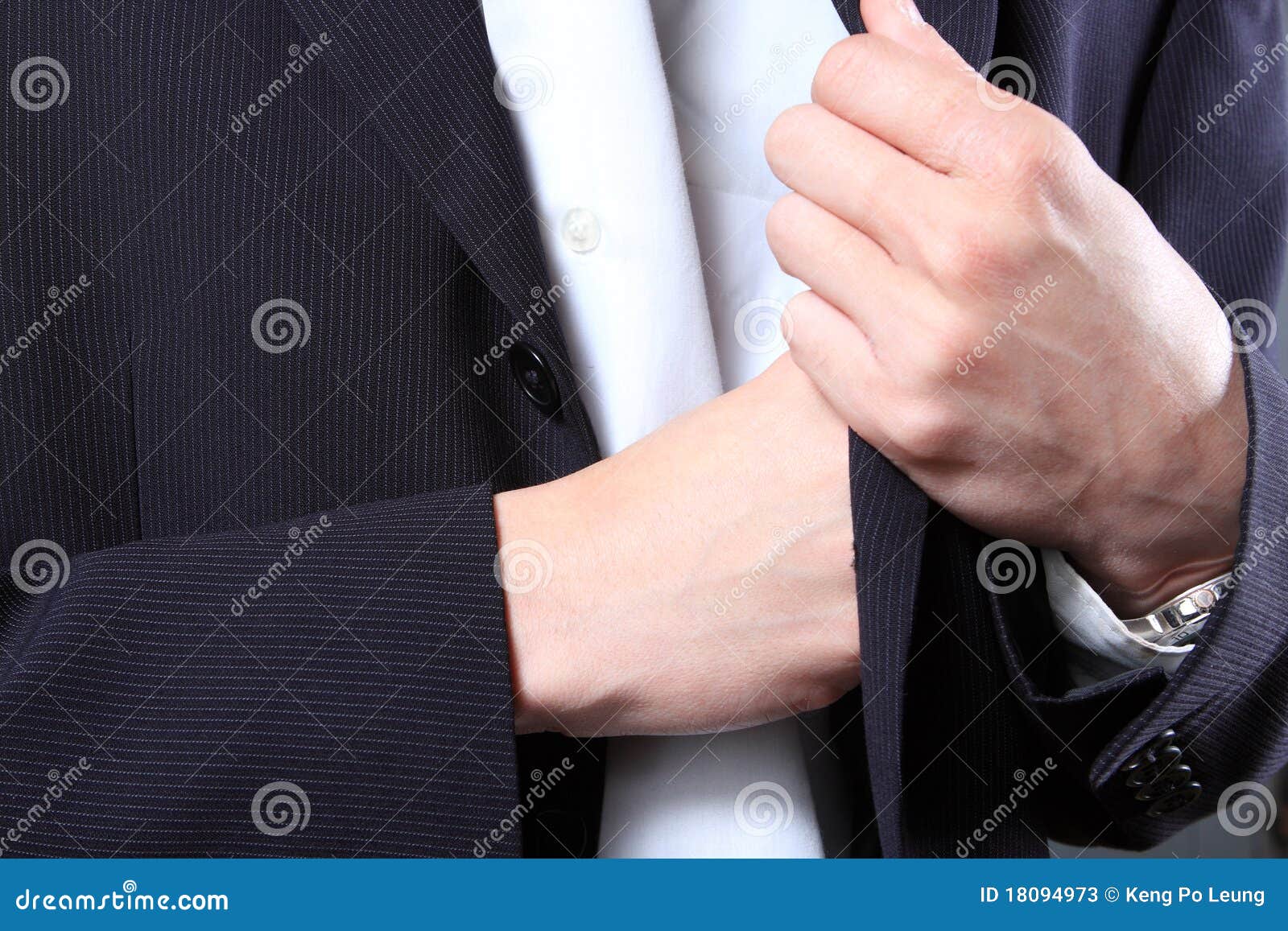
Famous People Who Used the Gesture
Many famous people have used the hand inside jacket gesture, including politicians, actors, and musicians. Some of the most famous examples include:
- Napoleon Bonaparte
- Donald Trump
- Barack Obama
- Frank Underwood from House of Cards
- Sherlock Holmes from Sherlock
Criticism of the Gesture
Despite its popularity, the hand inside jacket gesture has also been criticized for its association with power and dominance. Some people see it as a sign of arrogance and elitism. It can also be seen as a way to hide something, which can be suspicious in certain situations. In some cases, people may use this gesture to intentionally intimidate or provoke others.

Conclusion
The hand inside jacket gesture has a long and interesting history. While it was originally used by Napoleon to keep his hand warm, it has since evolved into a symbol of power and confidence. Whether you see it as a sign of respect or arrogance, it is important to understand the context in which it is used. By doing so, you can better interpret the message that the person is trying to convey.
Related video of Hand Inside Jacket Meaning
Are you looking for a delicious and refreshing drink that can quench your thirst and satisfy your taste buds at the same time? Look no further than the Half N Half recipe, a classic beverage that is loved by many for its perfect blend of sweetness and tartness.

What is Half N Half?
Half N Half, also known as Arnold Palmer, is a popular drink in the United States that is made by mixing equal parts of lemonade and iced tea. The drink is named after Arnold Palmer, a famous American golfer who was known for his love of this refreshing drink.
The Half N Half recipe is very easy to make and requires only a few ingredients, making it a perfect drink for any occasion.
Ingredients
To make the Half N Half recipe, you will need the following ingredients:
- Ice cubes
- Lemonade
- Iced tea
- Lemon slices (optional)
- Mint leaves (optional)
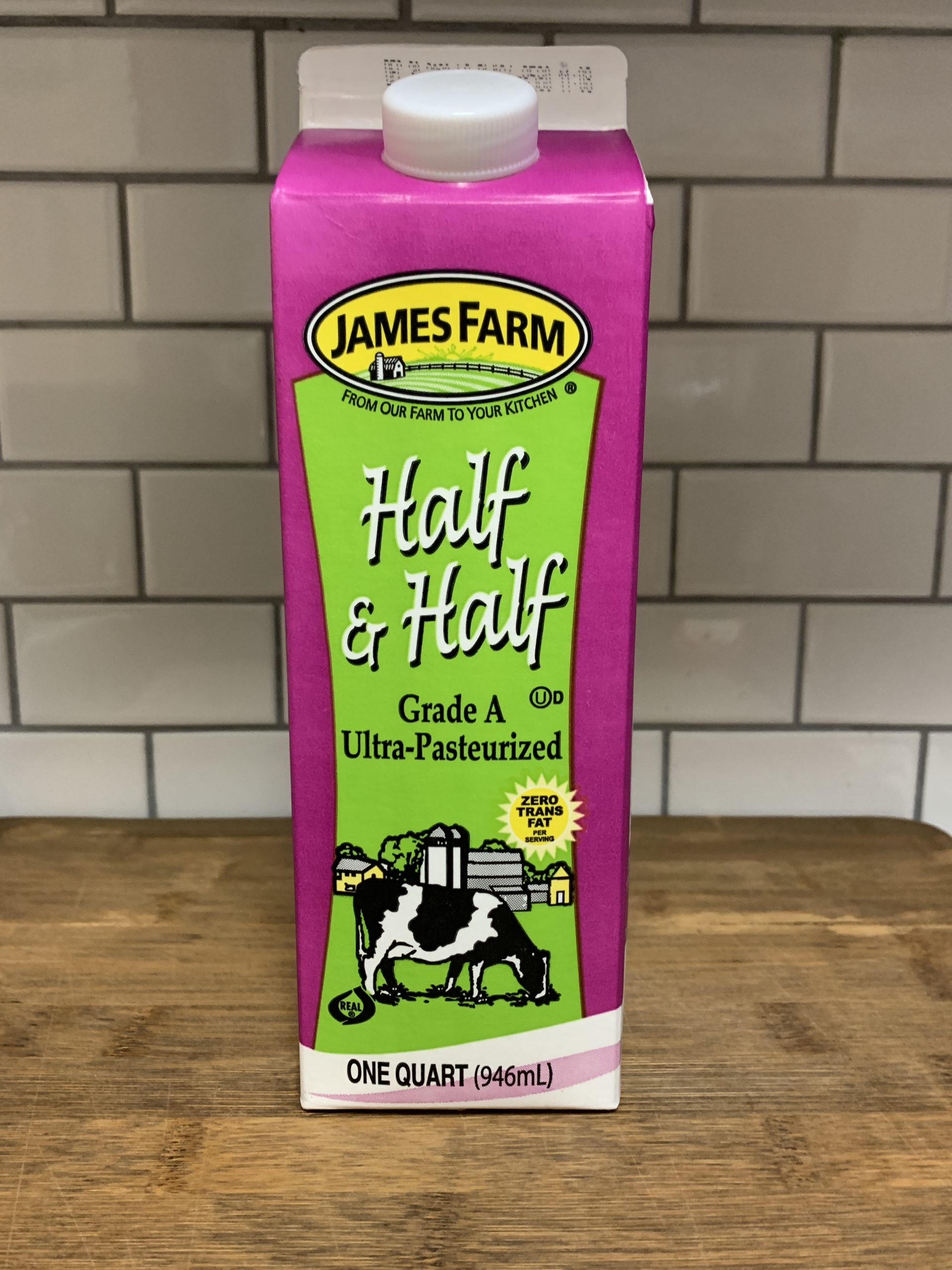
Instructions
Follow these simple steps to make your own Half N Half drink:
- Fill a glass with ice cubes
- Pour in equal parts of lemonade and iced tea
- Stir well to combine
- Garnish with lemon slices and mint leaves (optional)
- Enjoy!

Variations
The Half N Half recipe is very versatile and can be customized to suit your preferences. Here are some variations that you can try:
- Use different flavors of lemonade, such as pink lemonade or raspberry lemonade
- Use different types of tea, such as black tea or green tea
- Add a splash of fruit juice, such as orange or pineapple juice
- Add a shot of vodka or rum to make it a cocktail
Health Benefits
The Half N Half recipe is a refreshing and delicious drink that can provide some health benefits as well. Here are some of the health benefits of the Half N Half recipe:
- Lemonade is a good source of vitamin C, which can boost your immune system and protect your cells from damage
- Tea is rich in antioxidants, which can help reduce inflammation and lower your risk of chronic diseases
- Drinking Half N Half can help you stay hydrated and prevent dehydration, especially during hot weather

Conclusion
The Half N Half recipe is a classic and refreshing drink that is loved by many for its perfect blend of sweetness and tartness. It is very easy to make and can be customized to suit your preferences. Plus, it provides some health benefits as well. So why not try making your own Half N Half drink today?
Related video of Half N Half Recipe: A Perfect Blend of Sweetness and Tartness

Have you ever wondered how fast your hair grows? Hair growth rate varies from person to person, but on average, hair grows about 0.5 inches (1.25 cm) per month or about 0.017 inches (0.44 mm) per day. However, this rate can be influenced by several factors such as age, genetics, diet, and hair care practices.
The Hair Growth Cycle

Before we delve into the factors that affect hair growth rate, it's important to understand the hair growth cycle. The hair growth cycle consists of three phases: anagen, catagen, and telogen.
The anagen phase is the active growth phase, where hair grows from the hair follicle. This phase lasts anywhere from 2-7 years, depending on genetics and other factors.
The catagen phase is the transitional phase where hair stops growing and the hair follicle shrinks. This phase lasts about 2-3 weeks.
The telogen phase is the resting phase where the hair follicle is inactive and the hair eventually falls out. This phase lasts about 3-4 months before the hair cycle starts over again.
Factors Affecting Hair Growth Rate
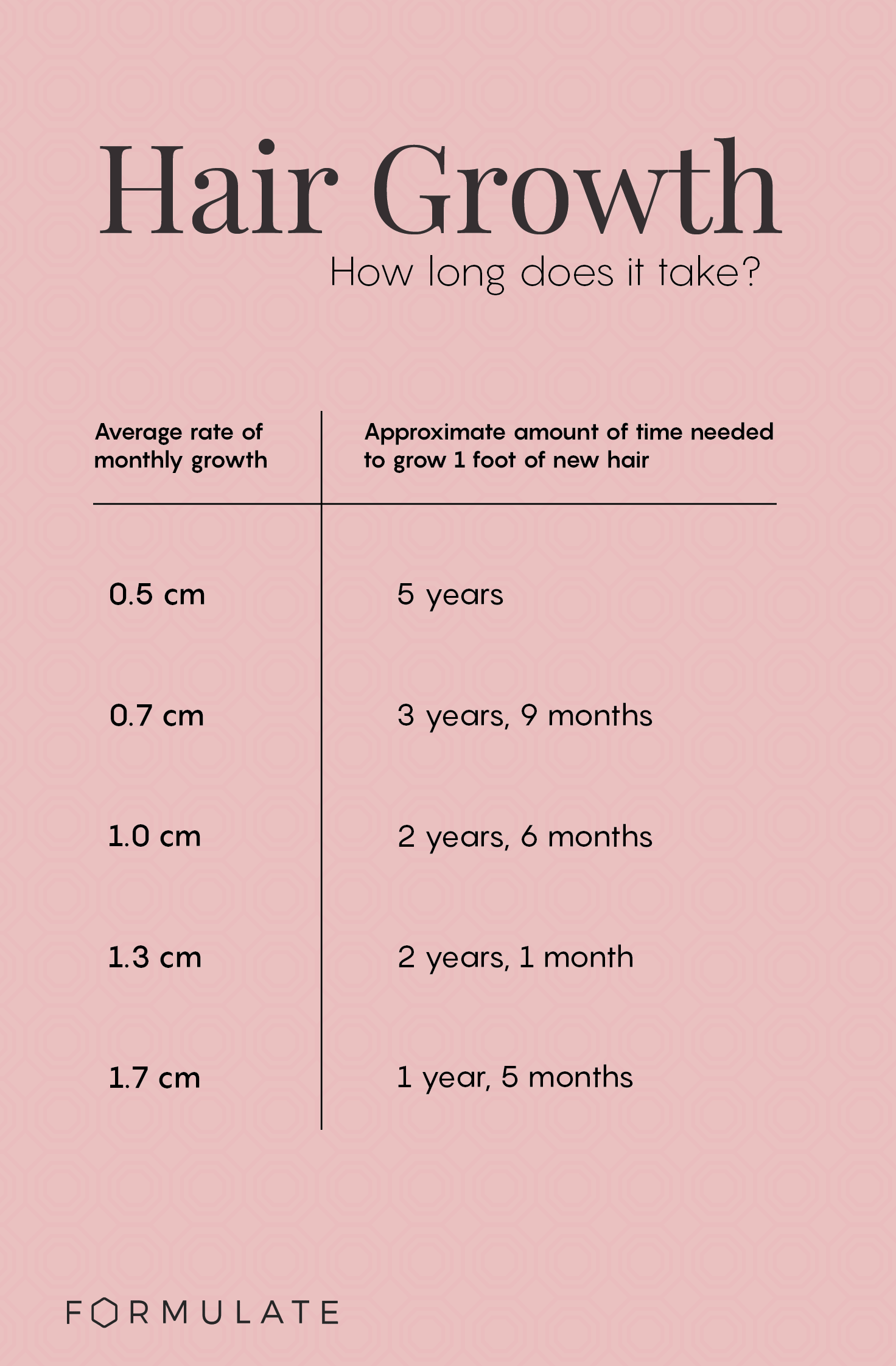
As previously mentioned, several factors can affect hair growth rate. Here are some of the most common factors:
Age

Age is one of the biggest factors that affect hair growth rate. As we age, our hair growth rate slows down. This is because the hair follicles become less active and produce thinner and shorter hair. In addition, the anagen phase shortens with age, resulting in slower hair growth.
Genetics
Genetics also play a significant role in hair growth rate. Some people are genetically predisposed to grow hair faster than others. In addition, genetics can determine the thickness, texture, and color of your hair.
Diet

Your diet can also affect your hair growth rate. A diet rich in vitamins, minerals, and protein can promote healthy hair growth. On the other hand, a poor diet can lead to slow hair growth or even hair loss.
Hormones

Hormones can also play a role in hair growth rate. Hormonal imbalances such as thyroid disorders, polycystic ovary syndrome (PCOS), and menopause can affect hair growth. In addition, hormonal changes during pregnancy can cause faster hair growth.
Hair Care Practices
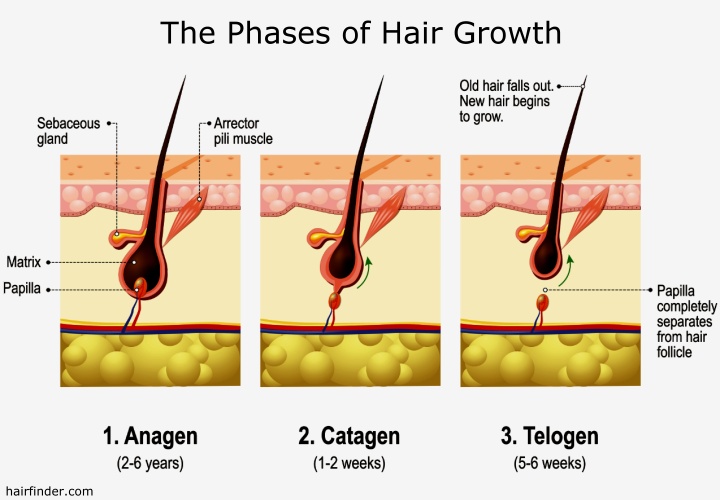
Finally, your hair care practices can also affect your hair growth rate. Over-styling, using harsh chemicals, and heat styling can damage your hair and slow down hair growth. On the other hand, regular conditioning, using a wide-tooth comb, and avoiding tight hairstyles can promote healthy hair growth.
Tips for Faster Hair Growth

While you can't change your genetics or age, there are some things you can do to promote faster hair growth. Here are some tips:
Eat a Balanced Diet
Eating a diet rich in vitamins, minerals, and protein can promote healthy hair growth. Some foods that are good for hair growth include salmon, eggs, spinach, sweet potatoes, and avocados.
Take Hair Growth Supplements
Supplements such as biotin, vitamin D, and iron can also promote hair growth. However, it's important to talk to your doctor before taking any supplements.
Avoid Over-Styling
Over-styling your hair can damage it and slow down hair growth. Avoid using harsh chemicals, heat styling, and tight hairstyles. Instead, opt for gentle hair care practices such as regular conditioning and using a wide-tooth comb.
Massage Your Scalp
Massaging your scalp can stimulate hair growth. Use your fingertips to massage your scalp for a few minutes each day.
Conclusion
In conclusion, understanding your hair growth rate can help you take better care of your hair. While hair growth rate varies from person to person, there are several factors that can affect it. By eating a balanced diet, taking hair growth supplements, avoiding over-styling, and massaging your scalp, you can promote healthy hair growth.
Related video of Hair Growth Rate Per Day: Understanding Your Hair Growth Cycle
Have you ever experienced hair and nails growing faster than normal? If so, you are not alone. Many people have noticed that their hair and nails are growing at a faster rate than usual. In this article, we will explore the reasons why this happens and what you can do about it.
What Causes Hair And Nails To Grow Faster?
There are several factors that can cause hair and nails to grow faster than normal. One of the main reasons is genetics. Some people are genetically predisposed to have faster hair and nail growth than others.

Another reason why hair and nails may grow faster is due to a change in hormone levels. Hormones play a crucial role in regulating hair and nail growth, and any fluctuation in hormone levels can cause changes in their growth rate.

Stress is also a factor that can contribute to faster hair and nail growth. When the body is under stress, it produces more cortisol, which can stimulate hair and nail growth.

What Can You Do About It?
If you are experiencing faster hair and nail growth than normal, there are several things you can do to manage it. One of the best things you can do is to maintain a healthy diet. Eating a balanced diet that is rich in vitamins and minerals can help to promote healthy hair and nail growth.

Regular exercise is also important for maintaining healthy hair and nail growth. Exercise improves blood circulation, which can help to deliver nutrients to the hair and nail follicles.

You can also take supplements that are designed to promote healthy hair and nail growth. These supplements contain vitamins and minerals that are essential for hair and nail health.

Conclusion
Overall, faster hair and nail growth is a common occurrence that can be caused by genetics, hormones, and stress. While there is no way to completely prevent hair and nail growth from accelerating, there are several things you can do to manage it. By maintaining a healthy diet, exercising regularly, and taking supplements, you can help to promote healthy hair and nail growth.
Related video of Hair And Nails Growing Faster Than Normal

Have you ever heard of a man who eats metal? It may sound strange, but there is actually a real guy out there who consumes metal objects. Meet Michel Lotito, a French entertainer who became famous for his bizarre eating habits.
Who is Michel Lotito?

Michel Lotito was born in Grenoble, France in 1950. In his early years, he discovered his ability to eat unusual objects such as glass, rubber, and metal. He then began performing in various shows and circuses around the world, gaining him the nickname "Monsieur Mangetout" or "Mr. Eat-All."
What Does He Eat?

Michel Lotito's diet consists of all kinds of metal objects. He has been known to eat bicycles, shopping carts, televisions, and even an entire Cessna 150 airplane! He also eats other objects such as glass, rubber, and plastic.
How Does He Do It?
Michel Lotito's body has some unique features that allow him to eat these objects. He has an abnormally thick lining in his stomach and intestines, which protects him from the sharp edges of the metal. He also drinks a lot of water during his meals to help him digest the objects.
Is it Safe?

While Michel Lotito has been performing his metal-eating act for decades, it is not recommended for anyone to try this at home. Eating metal objects can be extremely dangerous and even life-threatening. Lotito's unique physical attributes allow him to perform this act safely but it is not something that should be attempted by anyone else.
Why Does He Do It?

Michel Lotito's eating habits may seem strange to most people, but it has become his livelihood. He has made a career out of his unique talent and has gained a large following of fans who are fascinated by his ability to consume these objects.
Conclusion
Michel Lotito's bizarre eating habits have made him a household name in the entertainment industry. While it may not be safe to try this at home, it is fascinating to see what the human body is capable of. Would you ever try to eat metal objects? Let us know in the comments below!
Related video of Guy Who Eats Metal
Have you ever heard of a person eating a light bulb? It may sound unbelievable, but it is true. There are actually people who eat light bulbs, and one of them is a man known as "Light Bulb Eater."
Who is Light Bulb Eater?
Light Bulb Eater is a man who has made a name for himself by eating light bulbs. He has been featured on various television shows and has gained a following on social media. His real name is not known, but he is believed to be from the United States.
How Does He Eat Light Bulbs?

Light Bulb Eater does not eat light bulbs like a regular person eats food. He actually smashes the light bulbs into small pieces and swallows them whole. He claims that he has been doing it for years and has developed a technique that allows him to do it safely.
Why Does He Eat Light Bulbs?
The reason why Light Bulb Eater eats light bulbs is not clear. Some people believe that he does it for attention, while others think that he may have a psychological disorder. Whatever the reason may be, it is not recommended for anyone to try to eat a light bulb.
Is Eating Light Bulbs Dangerous?
Yes, eating light bulbs can be very dangerous. Light bulbs are made of glass and contain a small amount of mercury. If a person eats a light bulb, the glass can cause serious damage to the digestive system and the mercury can be toxic.
What Are the Risks of Eating Light Bulbs?

The risks of eating light bulbs include cuts to the mouth and throat, damage to the digestive system, and mercury poisoning. Mercury is a toxic substance that can cause serious health problems, including damage to the brain and nervous system.
What Should You Do If You Accidentally Swallow a Light Bulb?
If you accidentally swallow a light bulb, you should seek medical attention immediately. Do not try to induce vomiting or drink anything to try to flush out the glass. The glass can cause serious damage to the digestive system, and it is important to have a medical professional assess the situation.
Conclusion
In conclusion, eating a light bulb is not only bizarre but also extremely dangerous. Light Bulb Eater may have gained attention for his strange habit, but it is not recommended for anyone to try. If you accidentally swallow a light bulb, seek medical attention immediately to avoid any potential health risks.
Related video of Guy Eats Light Bulb

The Tragic Incident
The Dick Cavett Show was a popular TV talk show in the late 1960s and early 1970s. However, on one particular episode in 1971, tragedy struck. During a taping of the show, a guest suddenly collapsed and died on stage.

The Guest's Identity
The guest in question was James R. Jordan, Sr., the father of NBA legend Michael Jordan. Jordan was a young man at the time and had not yet achieved the fame and success that he would later enjoy. His father was a businessman and played a significant role in his life.
The Cause Of Death
The exact cause of James Jordan's death is still unknown. Some reports suggest that he suffered a heart attack, while others claim that he had a pulmonary embolism. Whatever the cause, it was a shocking and tragic event that left everyone involved in the show shaken.

The Aftermath
The incident had a significant impact on the Dick Cavett Show and its staff. They were understandably devastated by what had happened and took a break from filming for a while. However, the show eventually returned to the air, and life went on.
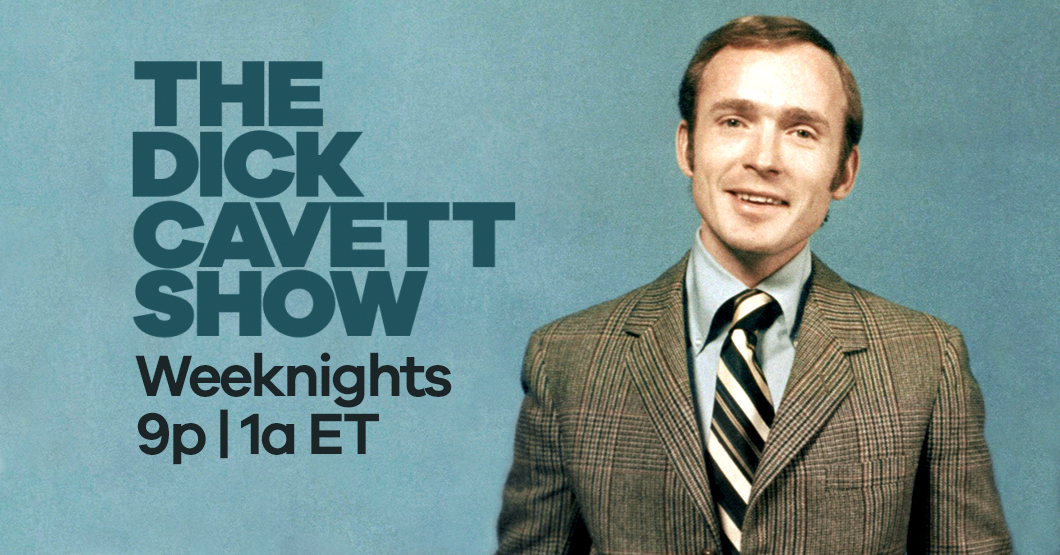
The Legacy
The death of James Jordan on the Dick Cavett Show was a tragic event that no one could have predicted. However, it has become a part of television history and is still remembered to this day. The incident serves as a reminder of the unpredictable nature of life and the importance of cherishing every moment.

Conclusion
The death of James Jordan on the Dick Cavett Show was a shocking and tragic event that left an indelible mark on television history. It serves as a reminder of the fragility of life and the importance of living each day to the fullest. Although it happened many years ago, it is still remembered and discussed today.
Related video of Guest Dies On Dick Cavett Show
ads
Search This Blog
Blog Archive
- August 2022 (31)
- July 2022 (31)
- June 2022 (31)
- May 2022 (31)
- April 2022 (29)
- March 2022 (31)
- February 2022 (28)
- January 2022 (31)
- December 2021 (7)
About Me
